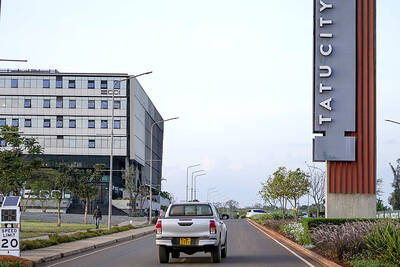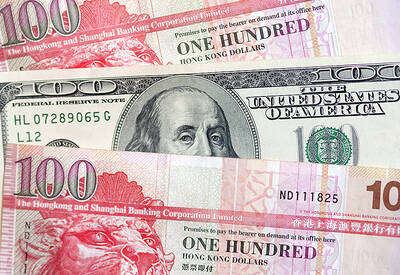The unemployment rate in Taiwan dropped to 3.73 percent last month, down 0.04 percentage points from a month earlier, as fewer people quit and more first-time jobseekers found work, the Directorate-General of Accounting, Budget and Statistics (DGBAS) said yesterday.
The reading after seasonal adjustments gained 1 percentage point to 3.73 percent, the agency said.
“The local job market is stable” based on the latest employment data, Census Department Deputy Director Pan Ning-hsin (潘寧馨) told a media briefing.
The unemployed population declined by 4,000 to 447,000, with the number of first-time jobseekers shrinking by 4,000 and the number of people who quit falling by 1,000, the DGBAS’ monthly survey showed.
However, the number of people who lost work to temporary or seasonal hiring increased by 2,000, it showed.
Compared with a year earlier, the number of people without a job rose 6,000, attributable to an ongoing economic slowdown that began in the second half of last year and has yet to end, it said.
That explained why the unemployment rate averaged 3.74 percent for the year as of November, up 0.03 percentage points from a year earlier, the survey said.
The addition of 68,000 jobs in the first 11 months of this year was the lowest in a decade, meriting close attention, the agency said, adding that the low birthrate has started to affect the market.
Additionally, unemployment was highest among people aged 20 to 24 at 12.55 percent, “as many of them are first-time jobseekers and need more time to transition from school to the real world,” it said.
The unemployment rate was 9.46 percent for those aged 15 to 19, and eased to 6.64 percent for those aged 25 to 29 and 3.35 percent for people aged 30 to 34, it said.
By education, university graduates had the highest unemployment rate among first-time jobseekers last month at 5.42 percent, followed by high-school graduates at 3.46 percent and those with graduate degrees at 3.08 percent, the survey showed.
The average unemployment period was 23.3 weeks, shorter by 0.7 weeks from a month earlier, it said.
The number of people who have been jobless for more than a year was 61,000, a drop of 3,000 from October, it said.
The nation’s unemployment rate is higher than Singapore’s 2.3 percent, Japan’s 2.4 percent, Hong Kong’s 3.2 percent and South Korea’s 3.5 percent, although Taiwan has outpaced them in GDP growth so far this year, the report said.

To many, Tatu City on the outskirts of Nairobi looks like a success. The first city entirely built by a private company to be operational in east Africa, with about 25,000 people living and working there, it accounts for about two-thirds of all foreign investment in Kenya. Its low-tax status has attracted more than 100 businesses including Heineken, coffee brand Dormans, and the biggest call-center and cold-chain transport firms in the region. However, to some local politicians, Tatu City has looked more like a target for extortion. A parade of governors have demanded land worth millions of dollars in exchange

Hong Kong authorities ramped up sales of the local dollar as the greenback’s slide threatened the foreign-exchange peg. The Hong Kong Monetary Authority (HKMA) sold a record HK$60.5 billion (US$7.8 billion) of the city’s currency, according to an alert sent on its Bloomberg page yesterday in Asia, after it tested the upper end of its trading band. That added to the HK$56.1 billion of sales versus the greenback since Friday. The rapid intervention signals efforts from the city’s authorities to limit the local currency’s moves within its HK$7.75 to HK$7.85 per US dollar trading band. Heavy sales of the local dollar by

Taiwan Semiconductor Manufacturing Co’s (TSMC, 台積電) revenue jumped 48 percent last month, underscoring how electronics firms scrambled to acquire essential components before global tariffs took effect. The main chipmaker for Apple Inc and Nvidia Corp reported monthly sales of NT$349.6 billion (US$11.6 billion). That compares with the average analysts’ estimate for a 38 percent rise in second-quarter revenue. US President Donald Trump’s trade war is prompting economists to retool GDP forecasts worldwide, casting doubt over the outlook for everything from iPhone demand to computing and datacenter construction. However, TSMC — a barometer for global tech spending given its central role in the

The Financial Supervisory Commission (FSC) yesterday met with some of the nation’s largest insurance companies as a skyrocketing New Taiwan dollar piles pressure on their hundreds of billions of dollars in US bond investments. The commission has asked some life insurance firms, among the biggest Asian holders of US debt, to discuss how the rapidly strengthening NT dollar has impacted their operations, people familiar with the matter said. The meeting took place as the NT dollar jumped as much as 5 percent yesterday, its biggest intraday gain in more than three decades. The local currency surged as exporters rushed to